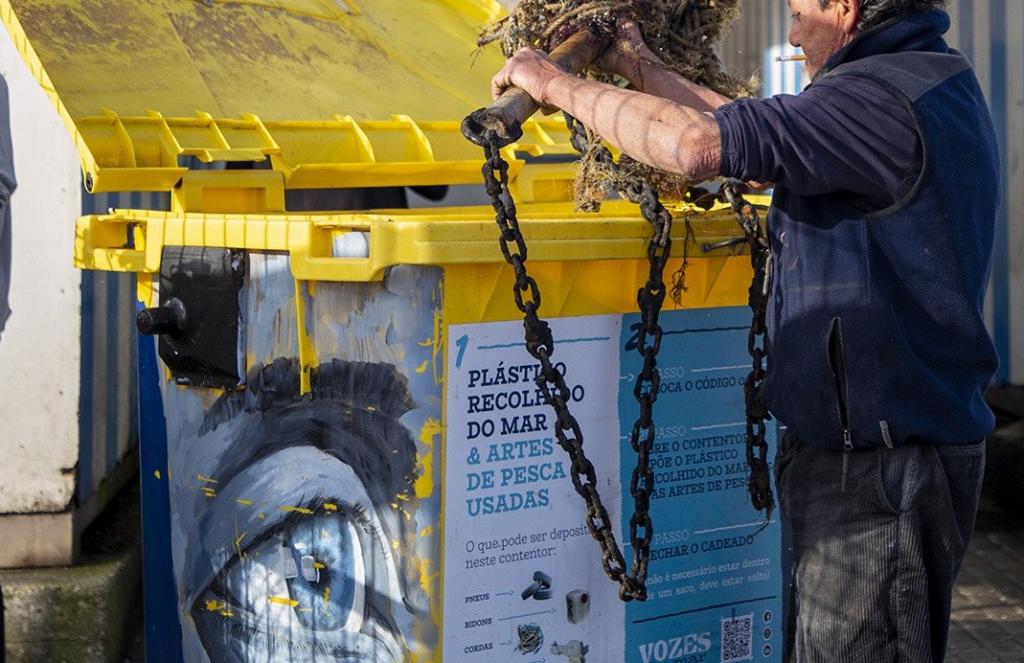Thessaloniki gets ready for its metro launch in November
The underground rapid transit lines have been under construction for almost two decades due to various project delays
 TheMayor.EU logo
TheMayor.EU logo 
The City of Cascais is trying to include more art in their climate awareness actions,, Source: City of Cascais
How to build local resilience by accelerating adaptation measures
Climate change is forcing the world to face changes in all levels and aspects of society at an increasingly rapid rate. Facing these changes needs to happen now, not in ten years, and it needs a concerted effort to bring together a variety of sectors in a ‘just’ way. It’s time to think outside the box to speed up the response. A multi-faceted approach that considers the who, the what and the how of climate adaptation plays a critical role in how cities can respond to climate threats.
Addressing disaster risk requires assessing possible solutions from different angles. For Eleni Myrivili, Senior Advisor for Resilience and Sustainability in the City of Athens and former elected Deputy Mayor, resiliency is about surviving the short-term sudden shocks, but also recognising the long-term effects that weaken the baseline response of a city:
It is typically the areas that are socio-economically most vulnerable that experience the effects of climate disasters,” notes Myrivili, “so addressing resiliency and disaster risk requires thinking of solutions that do not create more problems and acknowledging where your weaknesses and vulnerabilities are as well as their interdependencies.”
Even the north is not immune to the effects of climate change. As climate change has multiple implications for cities, according to Magnus Qvant, Senior Strategist for the City of Malmö (Sweden), cross-sector collaboration plays an important role, as much of the city’s functionality is carried out by the private sector:
I think it’s very important to onboard these sectors operating cities. We’ve done so with mitigation efforts and now we need to step up the discussion on adaptation.”
Including a variety of stakeholders in this conversation around climate adaptation can ensure multiple voices can be heard. Alongside who we are talking to and the holistic way to address adaptation measures, is how this information is communicated. Art can be an avenue for inspiring new ways of thinking about climate adaptation, as it opens our minds and can provide a fresh perspective.
In Cascais (Portugal), where sea level rise is a very real threat, art has been a way to convey the urgency of the issue to the community. According to João Dinis, Head of the Accelerating Urban Transitions Office at Portugal's Cascais City Council:
When it comes to climate action, the priority is communication and awareness to all sectors. The next big challenge that we are trying to pursue is to include more art in our awareness actions. Art culture is extremely important because it reaches a wide audience and really makes us think.”
Addressing disaster risk and building resiliency requires a holistic approach. Cross-sector stakeholder engagement, creative communication strategies, and adaptation measures that address the local needs of the community are key aspects to effectively reduce disaster risk in an accelerated manner.
For this reason, the EU Policy Support Facility (PSF), a pilot project under the Covenant of Mayors for Climate and Energy Europe and supported by ICLEI Europe and Climate Alliance was created to help cities address these challenges.
Many cities and regions across Europe have already drafted their plans to become more resilient and adapt to the effects of climate change. However, putting those into practice can often be challenging. That is why PSF could provide further support to move from planning to action,” notes Jole Lutzu, Officer for Sustainable Resources, Climate and Resilience at ICLEI Europe.

The underground rapid transit lines have been under construction for almost two decades due to various project delays

Now you can get your wine in Talence by paying directly in Bitcoin

That’s because the state has to spend money on updating the railway infrastructure rather than subsidizing the cost of the popular pass

Rethinking renewable energy sources for the urban landscape

The examples, compiled by Beyond Fossil Fuels, can inform and inspire communities and entrepreneurs that still feel trepidation at the prospect of energy transition

Now you can get your wine in Talence by paying directly in Bitcoin

The 10th European Conference on Sustainable Cities and Towns (ESCT) sets the stage for stronger cooperation between the EU, national and local level to fast track Europe's transition to climate neutrality.

At least, that’s the promise made by the mayor of Paris, Anne Hidalgo

The underground rapid transit lines have been under construction for almost two decades due to various project delays

At least, that’s the promise made by the mayor of Paris, Anne Hidalgo

Hostal de Pinós is located in the geographical centre of the autonomous region

Despite its church-y name, the district has long been known as the hangout spot for the artsy crowds

Urban dwellers across the EU are having a say in making their surroundings friendlier to people and the environment.

Forests in the EU can help green the European construction industry and bolster a continent-wide push for architectural improvements.

Apply by 10 November and do your part for the transformation of European public spaces

An interview with the Mayor of a Polish city that seeks to reinvent itself

An interview with the newly elected ICLEI President and Mayor of Malmö

A conversation with the Mayor of Lisbon about the spirit and dimensions of innovation present in the Portuguese capital














